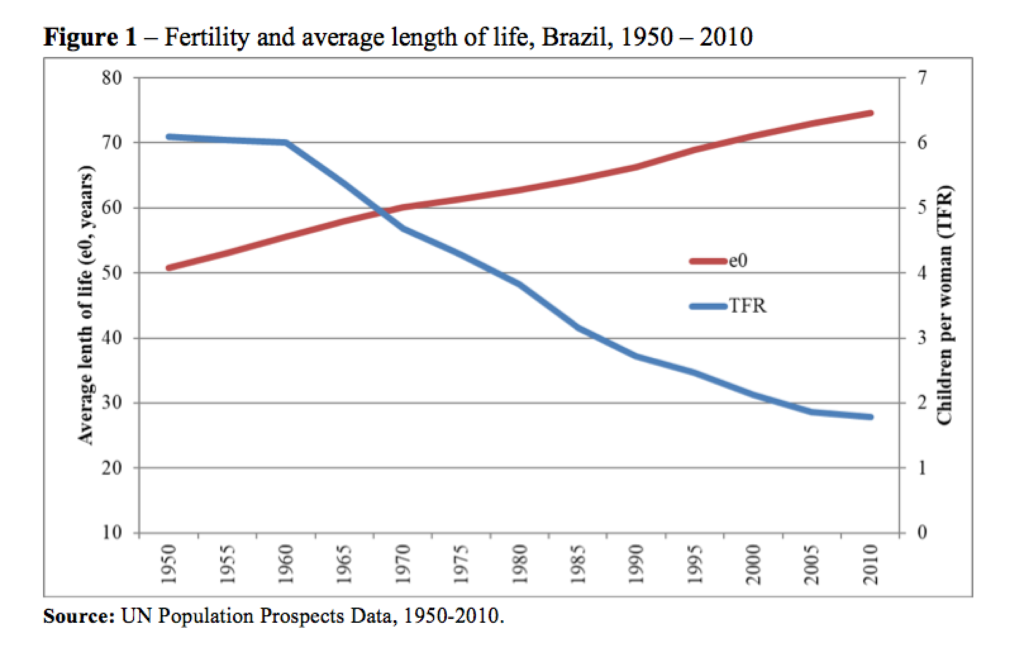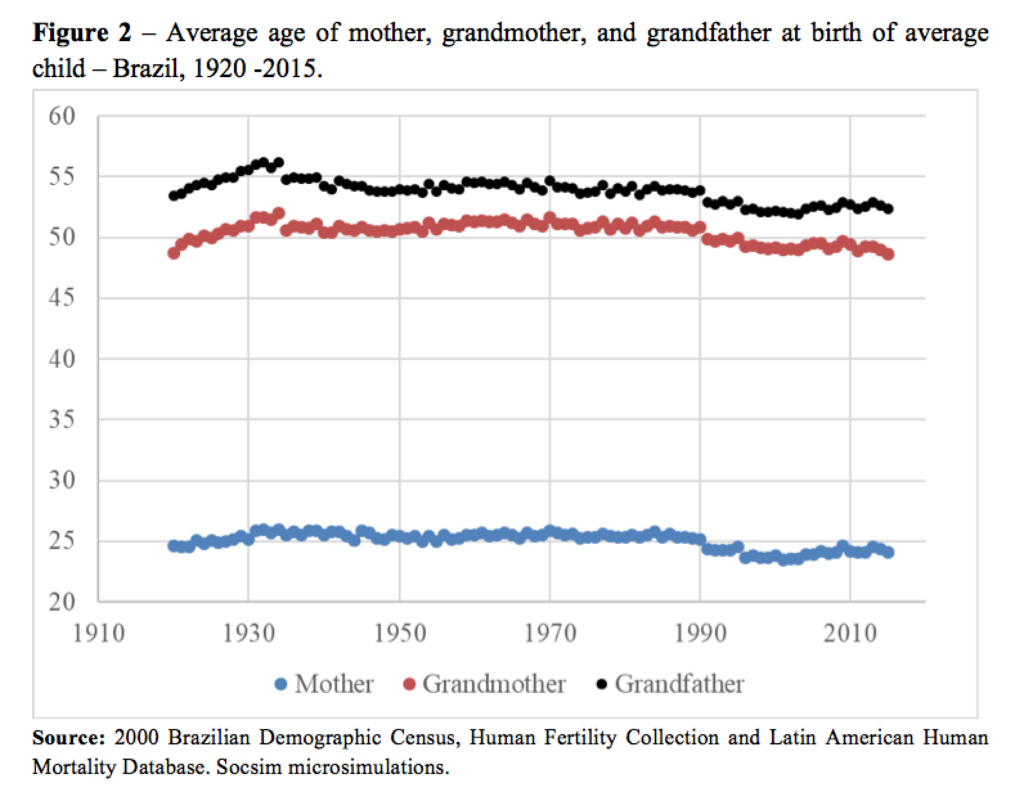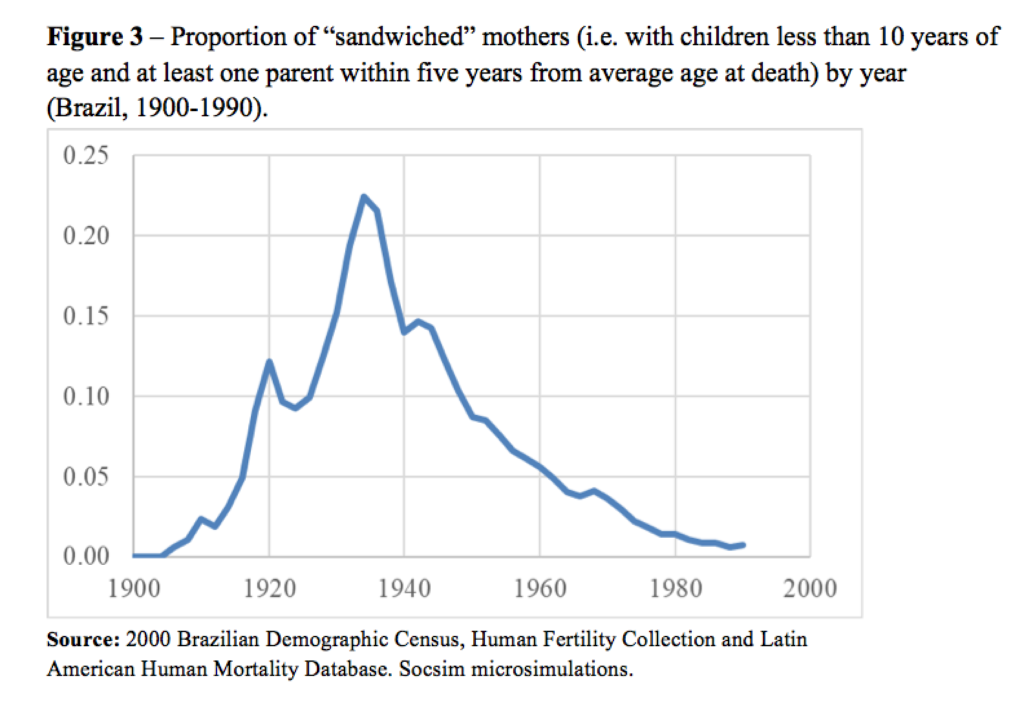Due to rapid and profound demographic changes, population age structure in Brazil has changed sharply in the past few years. Contrary to widespread belief, however, Maria Carolina Tomás, Everton Emanuel Campos de Lima and Bernardo Lanza Queiroz note that this process has not expanded the so-called sandwich generation: the number of middle-aged mothers who have to care for both their young children and the elderly parents with whom they co-reside is shrinking.
The demographics of the Brazilian sandwich generation
The increasing delay in fertility and the reduction in mortality have changed not only the population age structure (Castanheira and Kohler, 2017; França el al, 2017), but also family dynamics. Among other things, middle-aged women now face a much higher probability of having their elderly parents alive while still having to care for their young children. This so-called “sandwich generation”, with responsibilities towards both the younger and older generations, is a phenomenon that has attracted the attention of researchers and policy makers in recent years (Goldstein, Mason and Zagheni, 2011; Dukhovnov and Zagheni, 2015).
The operative definition of the sandwich generation may vary, depending on research objectives and data availability. It is usually defined as the middle-aged population, especially women, who have a dependent child (under 18 years old) and a living parent (aged over 65 who may need assistance). Both groups are generally assumed to be incapable of providing for their own needs, and therefore to compete for care and put the sandwich generation under pressure. Here, we adopt a slightly different definition, following Mason and Zagheni (2014): a woman is “sandwiched” if she has one or more children under the age of ten and one or more (old) parents who are less than five years away from the average age at death.
We discuss this phenomenon in Brazil, where both mortality and fertility have changed rapidly in the past few years. Fertility declined from 6.1 to 1.8 children per woman between 1950 and 2010 (when considerable postponement was also observed) whereas life expectancy increased from 50.8 years to 74.6. (Figure 1). In addition to this rapid demographic change, public transfers to the elderly are relatively high, but this has co-existed with a tradition of family support (Turra, Queiroz and Rios-Neto, 2011).

Different perspectives of the Brazilian sandwich generation
To get a glimpse of what has actually happened in Brazil in the past century or so we used Socsim, a social simulation demographic model, originally conceived by Gilbert and Hammel and further developed by Hammel, Wachter and Peter Laslett. We tried alternative scenarios of fertility and mortality (all compatible with Brazil’s history), but the differences between them turned out to be minor, so we will concentrate only on one of them, the most realistic, in our opinion (Lima, Tomás and Lanza Queiroz 2015).

Figure 2 shows some of our results: while the average age of mothers at childbirth has not changed much over time (from 25 years at the beginning of the century to 30 years today – but with a large decline in fertility), the age at becoming a grandparent increased rapidly from 1920 to 1940, and then stayed roughly constant.
Figure 3 shows the prevalence of the sandwich generation from the perspective of the child, by year. What emerges very clearly is that the average time women spend sandwiched between elderly parents and young children has declined in Brazil over the past 60 years, contrary to common perceptions and to what seems to happen in most developed countries.

A limitation of our analysis is that we use a definition of sandwich generation which is not fully comparable to that used by most of the literature in developed countries. However, we do not think that this invalidates our substantive findings: Mason and Zagheni (2014), for instance, who use the same definition as we do, observed a decline in sandwichness for most countries in the world, explained by the reduction in fertility levels and the increase in longevity.
References
Castanheira H.C., & Kohler H.P. (2017). Social determinants of low fertility in Brazil. Journal of Biosocial Science, 49(S1), S131-S155.
Dukhovnov D., & Zagheni E. (2015). Who takes care of whom in the United States? Time transfers by age and sex. Population and development review, 41(2), 183-206.
França E.B., et al (2017). Cause-specific mortality for 249 causes in Brazil and states during 1990–2015: a systematic analysis for the global burden of disease study 2015. Population Health Metrics, 15(1), 39.
Goldstein J., Mason C. and Zagheni E. (2011). Can grandma help with the kids? A demographic analysis of the sandwich generation. In Annual Meeting of the Population Association of America, Washington DC.
Lima E.E.C., Tomás M.C. and Lanza Queiroz B. (2015). The sandwich generation in Brazil: demographic determinants and implications. Revista Latinoamericana de Población, 9(16).
Mason C. and Zagheni E. (2014), “The sandwich generation: demographic determinants of global trends”, Annual Meeting of the Population Association, Boston. Mass.
Turra, C. M.; Queiroz, B L.; Rrios-Neto, E LG.. Idiosyncrasies of intergenerational transfers in Brazil. In: Lee, R. & Mason, A. (eds) Population Aging and the Generational Economy, p. 394, 2011.


